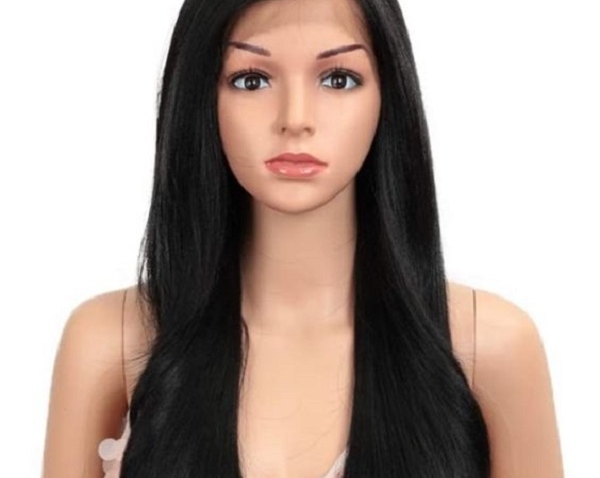
How to Keep Wigs at Home: Essential Tips for Longevity
Wigs can transform your look, offering versatility and style without the commitment of permanent changes. However, proper care and storage are vital for maintaining their quality and appearance. In this article, we’ll delve into effective methods on how to keep wigs at home, ensuring they remain in top condition for every occasion.
Understanding Your Wig: Materials and Care
How to keep wigs at home? Wigs come in various materials, each requiring unique care. Knowing whether your wig is made from synthetic fibers or human hair will guide your maintenance routine.
Synthetic Wigs
Synthetic wigs are typically more affordable and easier to maintain. They hold styles well but can be sensitive to heat. Avoid using heated styling tools unless specifically labeled as heat-friendly.
Care Tips for Synthetic Wigs
- Washing: Use cold water and a mild shampoo. Rinse thoroughly and gently blot dry with a towel.
- Storage: Place in a wig stand or a box to maintain shape and avoid tangling.
Human Hair Wigs
Human hair wigs offer a natural look and styling flexibility. They can be treated like your own hair, but they require more effort to keep them looking great.
Care Tips for Human Hair Wigs
- Washing: Use sulfate-free shampoo and conditioner. Wash in lukewarm water to preserve the hair’s luster.
- Styling: You can use styling products and tools, but limit heat exposure to maintain health.
The Importance of Proper Storage
Proper storage plays a crucial role in maintaining the quality of your wigs. Here’s how to ensure they are well-kept when not in use.

Using Wig Stands
Wig stands are an excellent way to store your wigs. They help retain the shape and prevent tangling. Choose a stand that fits the style and size of your wig for optimal results.
Wig Bags
For added protection, consider using specialized wig bags. These breathable bags prevent dust accumulation while allowing airflow to keep the wig fresh.
Regular Maintenance: The Key to Longevity
Routine maintenance helps prolong the lifespan of your wigs. Here are some essential practices to integrate into your wig care routine.
Cleaning Schedule
Establish a cleaning schedule based on usage. For daily wear, washing every 4-6 weeks is recommended. If worn occasionally, cleaning every 2-3 months may suffice.
Conditioning
Conditioning helps maintain moisture and shine. Apply a leave-in conditioner after washing to keep the fibers hydrated.
Dealing with Tangling and Frizz
Tangling and frizz can occur, especially in longer wigs. Here’s how to address these issues.
Detangling Techniques
Always detangle your wig before washing. Use a wide-tooth comb, starting from the tips and working your way up to the roots.
Anti-Frizz Products
Consider using anti-frizz sprays designed for wigs. These products help manage unruly strands while adding shine.
Protecting Your Wigs During Use
How to keep wigs at home? Whether you wear your wig daily or on special occasions, protecting it from environmental factors is essential.
Avoiding Heat Damage
When styling, limit heat exposure and always use heat protectants. This will safeguard your wig from damage, ensuring it retains its look longer.
Shielding from the Elements
Protect your wigs from sun, wind, and rain. If you’re heading outdoors, consider wearing a hat or using a protective spray.
Why You Should Invest in Quality Products
Investing in quality wigs and maintenance products pays off in the long run. High-quality wigs offer better longevity and a more natural appearance.
Choosing the Right Products
Select shampoos, conditioners, and styling products specifically designed for wigs. These products help maintain the integrity of the fibers and enhance the overall appearance.
Advanced Wig Care Techniques
To truly master how to keep wigs at home, consider implementing some advanced care techniques that can further protect your investment.
Regular Inspection
Inspect your wigs regularly for signs of wear and tear. Look for loose strands, fraying, or changes in texture. Addressing these issues early can prevent further damage and extend the lifespan of your wig.

What to Look For:
- Cap Integrity: Ensure the wig cap remains intact and secure.
- Shedding: If you notice excessive shedding, it may be time for professional repair.
Heat Styling Precautions
How to keep wigs at home? When styling your wig with heat, always start with lower temperatures and gradually increase as needed. This cautious approach helps prevent heat damage, especially in synthetic wigs.
Recommended Tools:
- Heat Protectant Sprays: Always use these before styling.
- Low-Heat Tools: Opt for styling tools designed for wigs that allow for controlled temperatures.
Seasonal Care for Wigs
Different seasons can impact the condition of your wigs. Here are tailored tips for each season.
Summer Care
During hot and humid months, wigs can become sweaty and frizzy. Here’s how to keep them fresh:
- Airflow: Opt for lighter styles and breathable materials to allow ventilation.
- Avoid Excessive Heat: Limit exposure to the sun and keep wigs in cool places.
Winter Protection
In winter, dry air can lead to static and dryness in wigs. Combat this by:
- Conditioning: Use hydrating conditioners regularly.
- Static Control Products: Apply anti-static sprays designed for wigs to manage frizz.
DIY Wig Care Solutions
Creating your own wig care solutions can be both economical and effective. Here are some DIY tips.
Homemade Wig Shampoo
Mix equal parts of gentle shampoo and water in a spray bottle. This solution can be used to refresh your wig between washes without overwhelming the fibers.
Conditioning Treatments
Consider using natural oils like argan or coconut oil as deep conditioning treatments. Apply a small amount to the wig, leave it on for a few hours, then rinse out.
Understanding Wig Styles and Their Care
Different styles of wigs may require specific care methods. Understanding this can enhance your ability to maintain them effectively.
Curly Wigs
Curly wigs may need special attention to maintain their bounce. Here’s how to care for them:
- Avoid Combing: Use your fingers to separate curls gently.
- Curl Enhancing Products: Use sprays designed for curly wigs to keep them looking lively.
Straight Wigs
Straight wigs can often be styled with heated tools, but caution is essential. Ensure you:
- Keep Hair Smooth: Use serums to tame frizz and enhance shine.
- Heat Sparingly: Limit heat application to prevent damage.
Professional Help
Sometimes, seeking professional assistance is the best route for maintaining your wig.

Wig Repairs and Restorations
If your wig has significant wear, consider professional cleaning and repair services. These experts can restore your wig’s original beauty and extend its usability.
Consultation for Styling
When you’re unsure how to style your wig, consult with a professional stylist. They can provide personalized tips that cater to your specific wig type and style.
Your Ultimate Guide to Wig Care: Tips for Keeping Your Wigs Looking Fabulous
Wigs are a versatile and stylish accessory that can transform your appearance. To ensure your wigs remain in optimal condition and maintain their beauty, proper care is essential. By understanding your wig’s material, practicing proper storage, and following a regular cleaning schedule, you can keep your wigs looking stunning for years to come.
Understanding Your Wig Material:
Different wig materials require specific care. Common materials include:
- Human hair: Human hair wigs offer the most natural appearance and can be styled with heat. They require gentle care and regular conditioning.
- Synthetic hair: Synthetic wigs are generally more affordable and require less maintenance. However, they may not withstand high heat styling.
- Heat-resistant synthetic hair: This type of synthetic hair can be styled with heat, similar to human hair. It offers a balance of affordability and durability.
By following these guidelines, you can ensure that your wigs remain in excellent condition and continue to enhance your style and confidence.












Leave a Reply